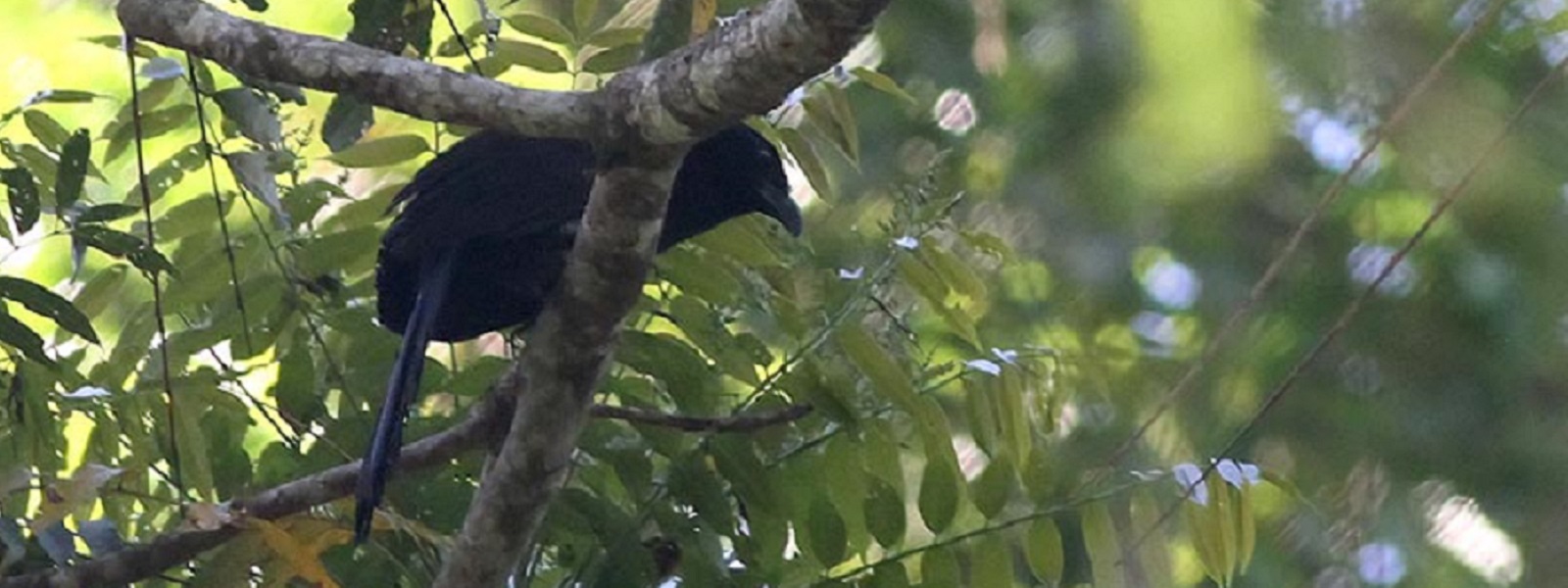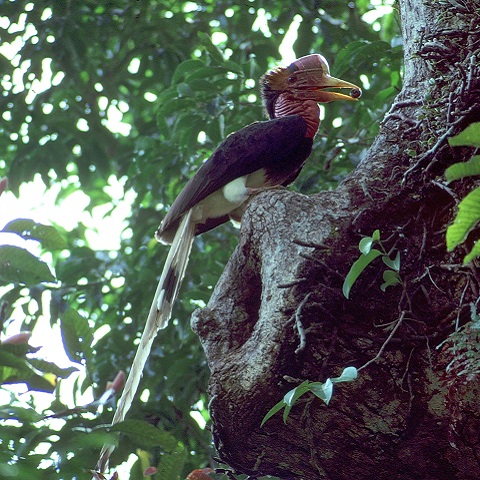Conservation Actions
Conservation Actions UnderwayAn education programme has also been started at Malpalon. Funding has been provided for faunal inventories and environmental education initiatives at Puerto Galera, where hunting has been locally prohibited. The Sablayan Penal Colony recently adopted the Mindoro Bleeding-heart Gallicolumba platenae as their flagship species for conservation and established a forest protection and restoration unit within the boundaries of the penal colony inside the Mt. Siburan IBA, which may also benefit the coucal (B. Tabaranza in litt. 2008). Protected areas such as Lake Naujan National Park and Mount Calavite Wildlife Sanctuary have had recent potential sightings of the species (Lit Jnr. et al. 2011, Mindoro Biodiversity Conservation Foundation Inc. 2014).
As part of the BirdLife Preventing Extinctions programme, Species Guardians Haribon Foundation are implementing the following actions for Mindoro Bleeding-heart and Black-hooded Coucal (BirdLife International 2008): an IBA monitoring team for Mount Siburan has been set up, training and utilising local participants; actions are underway to strengthen the Sablayan Forest Management Board (SFMB), the main function of which is to oversee the implementation of the Sablayan Forest Management Plan; an IEC (Information-Education-Communication) Plan is being developed for use in environmental education, awareness raising and local advocacy; a Sablayan Ecotourism Plan is being developed, including training local bird tour guides; and efforts have been made to strengthen and consolidate the Site Support Group's actions aimed at eliminating logging activities and the accidental snaring of Mindoro Bleeding-heart. Conservation Actions Proposed
Identify and conduct further surveys in remaining suitable habitat, e.g. at Mt Halcon, to clarify its current status. Establish formal, managed protected areas to conserve remnant forest at Malpalon and Puerto Galera. Extend Mt Iglit-Baco National Park to encompass remaining lowland forest tracts. Devise and implement a management plan for the forest at Siburan that reconciles biodiversity with its role as a prison. Raise public awareness about the status and importance of this species.
Location Information
Centropus steerii is endemic to the island of Mindoro in the Philippines, where it was formerly widespread and fairly common (Collar et al. 1999). However, only a tiny amount of lowland forest remains on Mindoro and its population is now believed to be extremely small, with records since the 1980s from only a very limited number of localities, including Siburan, Puerto Galera and Malpalon; two of which are adjacent to each other. Siburan is regarded as probably the key site for the species, where at least five calling birds were recorded during one day in 2011 (R. Hutchinson in litt. 2012).Geographic Range
Extant
Philippines
Population Information
The population is estimated to number 50-249 mature individuals based on a detailed analysis of recent records by BirdLife International (2001). This equates to 75-374 individuals in total, rounded here to 70-400 individuals.Threats
By 1988, extensive deforestation on Mindoro had reduced forest cover to a mere 120 km2, of which only a small proportion is below this species's upper altitudinal limit. The lowland forest that does remain is highly fragmented and it is believed that at the current rate of deforestation all forest may disappear by 2020-2030. Slash-and-burn cultivation, occasional selective logging and rattan collection threaten the forest fragments that still support the species. Dynamite blasting for marble is an additional threat to forest at Puerto Galera. The species's genetic viability may be at risk given the small size and fragmented nature of remaining populations.IUCN Red List Account Link
Please click here to see the species' IUCN Red List Account page.Photo Credits
Ivan Sarenas (category image)
Markus Lagerqvist (featured image)





